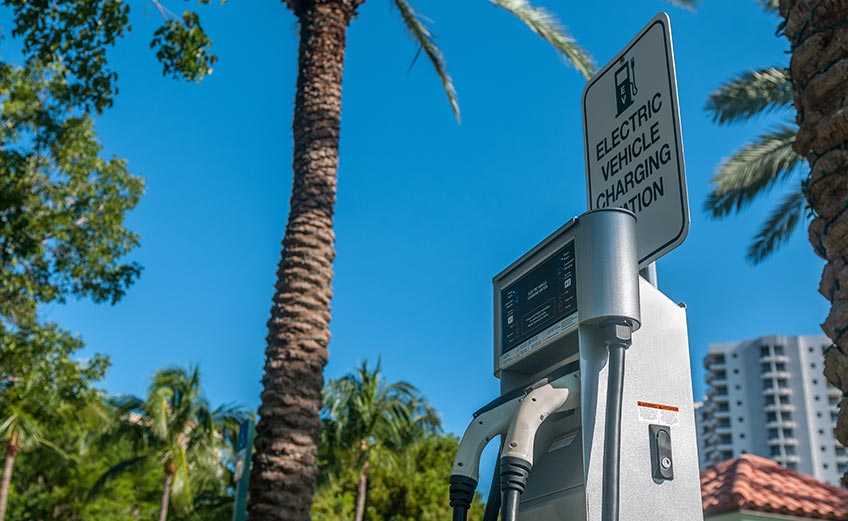NREL's EVI-Pro Lite Tool Paves the Way for Future Electric Vehicle Infrastructure Planning
A transportation transformation is right around the corner, with recent predictions that ever-cheaper batteries and the falling cost of manufacturing will accelerate market adoption, making plug-in electric vehicles (PEV) up to 35% of the global auto fleet within the next two decades.

To assist state and local governments anticipating this type of growth in PEVs, the National Renewable Energy Laboratory (NREL) has created a new tool called EVI-Pro Lite—a simplified version of the Electric Vehicle Infrastructure Projection Tool (EVI-Pro) model. Combining a sleek and user-friendly interface, the powerful tool identifies both existing public electric vehicle charging infrastructure and projects future consumer demand for charging infrastructure by state or city/urban area based on user inputs for the anticipated number of PEVs. A demonstration of EVI-Pro Lite will be held during an upcoming webinar scheduled Monday, May 21 at 3 p.m. – 4:30 p.m. Eastern Time.
“EVI-Pro Lite was developed to make insights from recent studies accessible to public and private organizations investing in PEV charging infrastructure,” said NREL’s Eric Wood, a vehicle systems engineer. “The tool highlights key variables affecting the co-evolution of regional PEV fleets and charging infrastructure, providing stakeholders with information needed to make more informed decisions.”
EVI-Pro, the more robust model the tool draws from, was developed in collaboration with the California Energy Commission and support from the U.S. Department of Energy’s Vehicle Technologies Office (VTO). The model uses detailed data from personal vehicle travel patterns, electric vehicle attributes, and charging station characteristics. These data feed the tool’s extensive simulations approach to estimate the quantity and type of charging infrastructure necessary to support regional adoption of electric vehicles.
Assumptions in the EVI-Pro Lite tool are consistent with a recent NREL study conducted using EVI-Pro analysis that investigated charging infrastructure requirements at the national level and relied on advanced PEV simulations using millions of miles of real-world daily driving schedules sourced from large public and commercial travel data sets. EVI-Pro has also been used for detailed planning studies at the regional level in Massachusetts; Columbus, Ohio; and California; as well as a forthcoming study in Maryland.
VTO and the Better Communities Alliance will host the Electric Vehicle Infrastructure Projection (EVI-Pro) Lite Tool webinar later this month.
Presenters will include:
- Eric Wood, NREL vehicle systems engineer, will lead the demonstration of the EVI-Pro Lite tool.
- Bud Braughton, an engineer with the City of Columbus, will discuss how the city has used the detailed planning study developed by NREL.
- Rachael Nealer, a VTO analysis program manager, will discuss how EVI-Pro supports ongoing analysis at DOE.
Visit the EVI-Pro Lite page to begin planning for your city or state’s electric vehicle charging needs. See the Alternative Fuels Data Center for additional information about developing PEV infrastructure or how to locate existing charging stations in your area.
Learn more about NREL's transportation research.
Last Updated May 28, 2025
